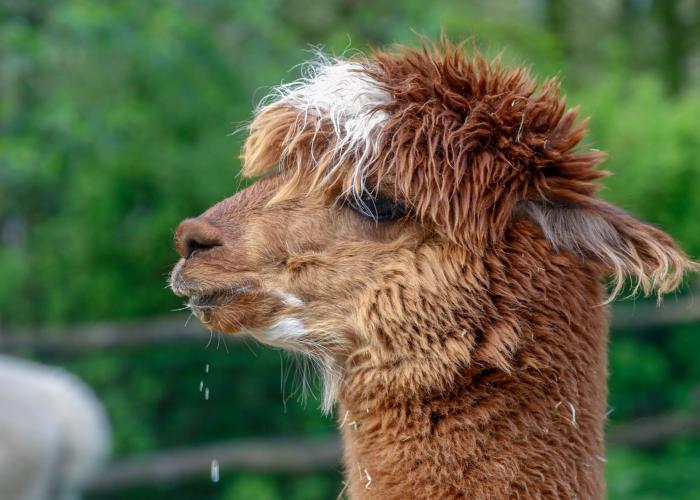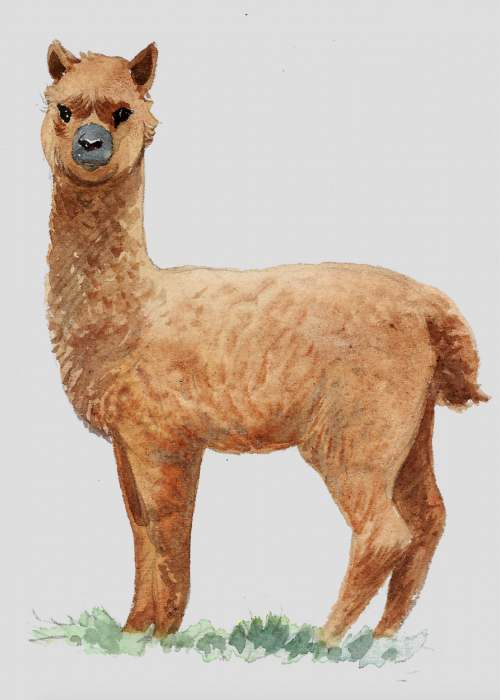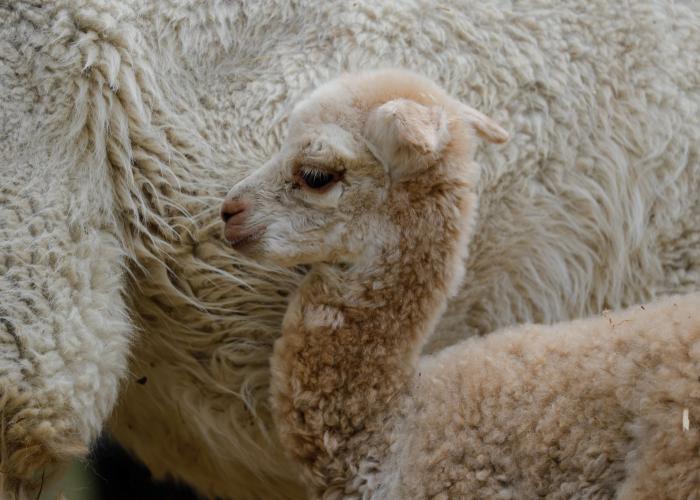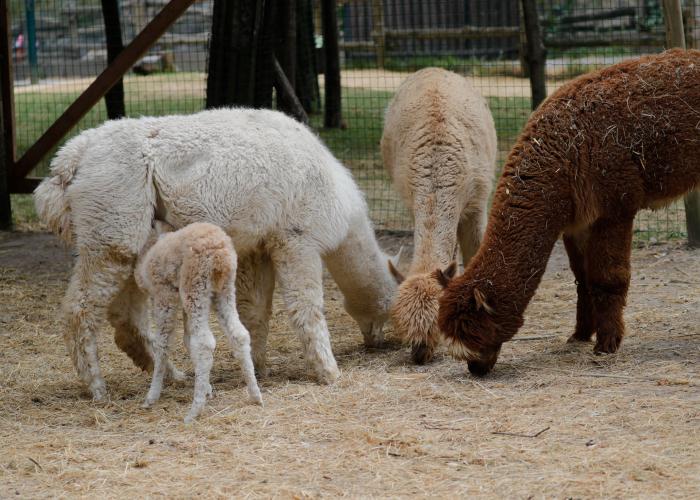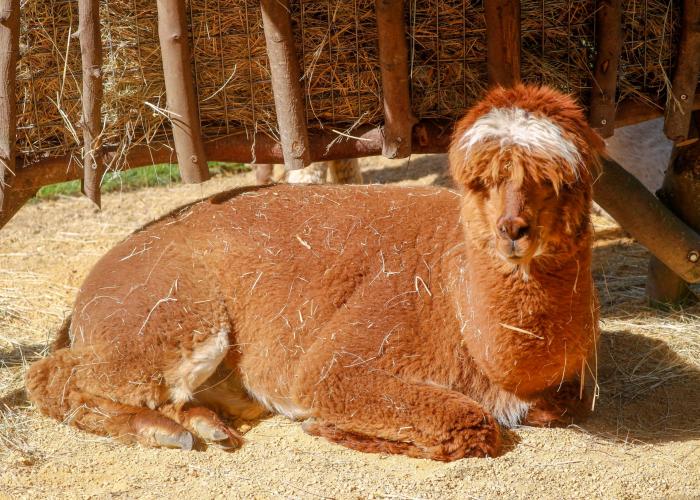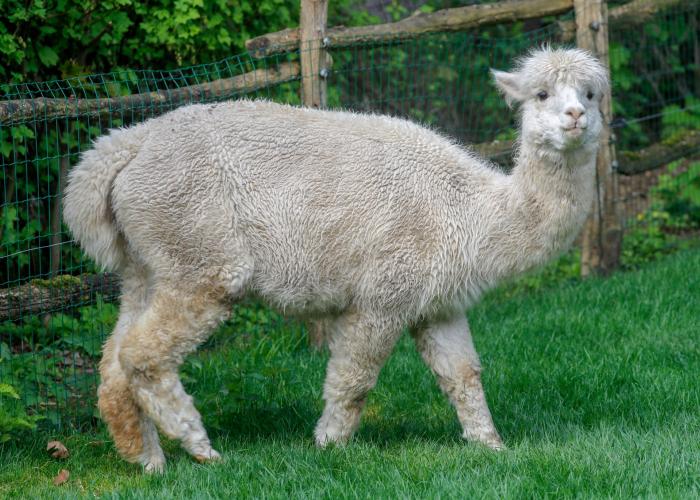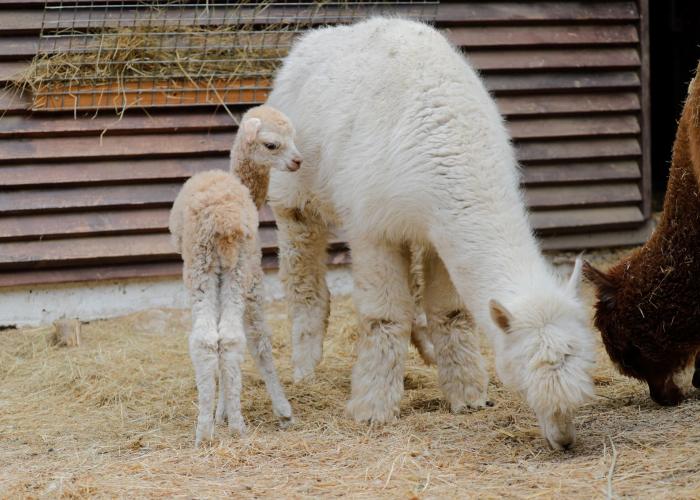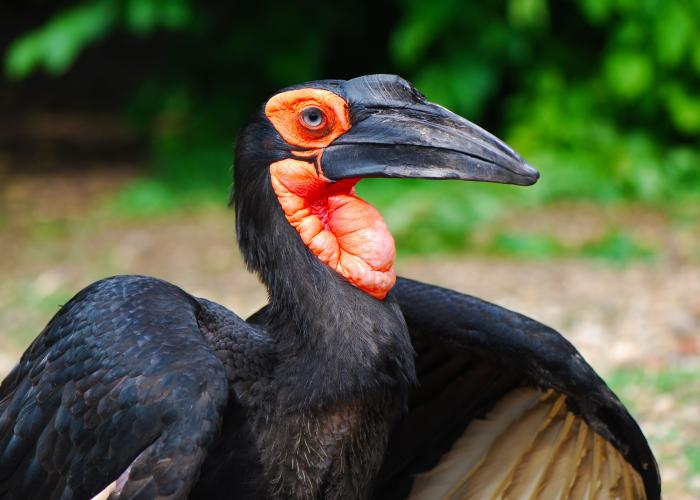Alpaca
There are no known wild alpacas
Originating in the high plateaus of the Andes, the alpaca has been domesticated by man for centuries, like the three other species of South American camelids (llama, vicuña and guanaco). Evidence of this has been found in pre-Columbian art, and there are no known wild alpacas. Measuring just 1 metre to the shoulder, the alpaca is too small to be used as a draft animal or for other work that requires strength, so it is generally raised for the remarkable quality of its soft, fine wool; and for meat as a by-product.
The alpaca lives in small herds of females and their young, led by a dominant male. It grazes on the herbs and plants of the high mountains, and, like other camelids, has a complex stomach divided into three compartments so that it can extract a maximum of nutrients from poor-quality food.
As a result, it eats very little (just 1 kg of fodder per day) compared to other animals of its size. After a long gestation period of 11 months, the female gives birth to one young, or very occasionally two. And watch out: it’s best not to annoy an alpaca because it can spit, just like certain llamas…
An animal from South America
- Name : Alpaca
- Latin name: Lama pacos
- Origin : South America (Chile, Bolivia, Peru, Ecuador)
- IUCN status : --
- Cites : --
